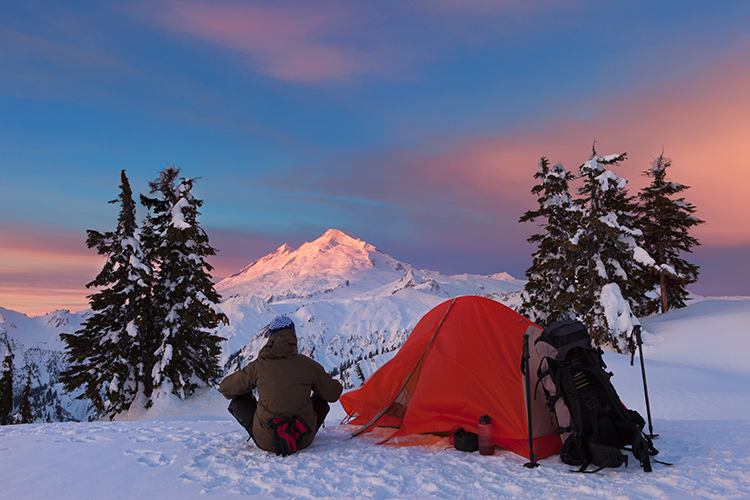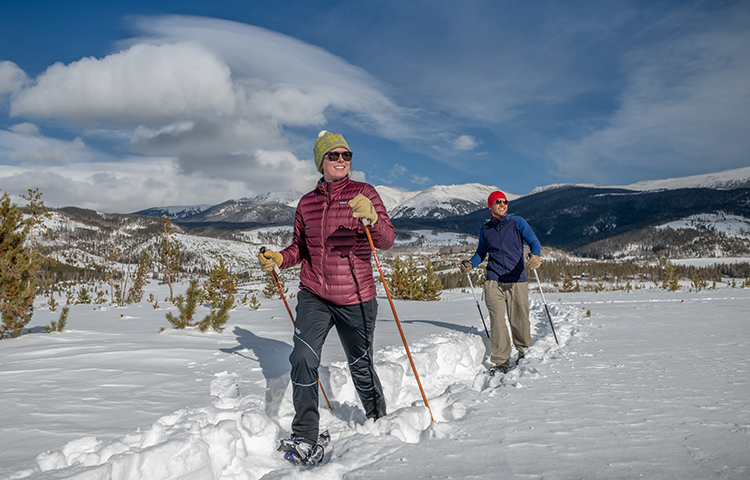Proper layering of clothing prevents excess sweat and moisture build up, which can chill you under winter conditions. Start with a moisture-wicking base layer against your skin. Modern undergarments made of breathable synthetic fabric fit the bill. These can be had in long or short versions. If you prefer undergarments made from natural fabrics, silk is a great choice, but it is expensive.
Next come your pants and shirt. In cold weather, wool works great for both, but it is heavy and some people don’t like the feel of wool on their skin. In this case, you can again opt for synthetics. I personally like wool pants over synthetic long underwear for warmth. Wear a light breathable long sleeve shirt on top.
Keep your feet warm and prevent blisters. Include synthetic socks with wool hiking socks on top. Make sure your footwear is broken in before a long hike.
If conditions call for outerwear, you can wear a wool or fleece sweater. If it warms up, remove it and place it in your pack, so that you don’t sweat too much. Depending upon conditions, your outer garment could be a wind and water-resistant outer shell from Gore-Tex or a lightweight goose down vest or jacket. Mix the top garments as needed. You may want to also bring along gloves or a scarf. Choose a material like silk, synthetic or cashmere that won’t irritate the neck. Top it all off with a wool or synthetic watch cap.









